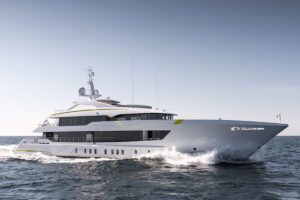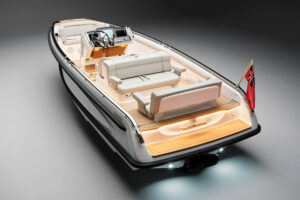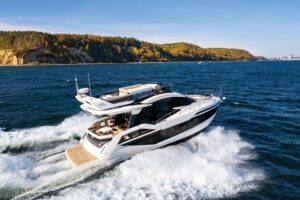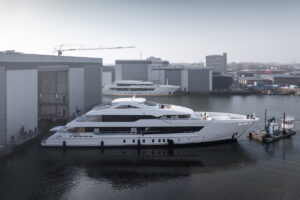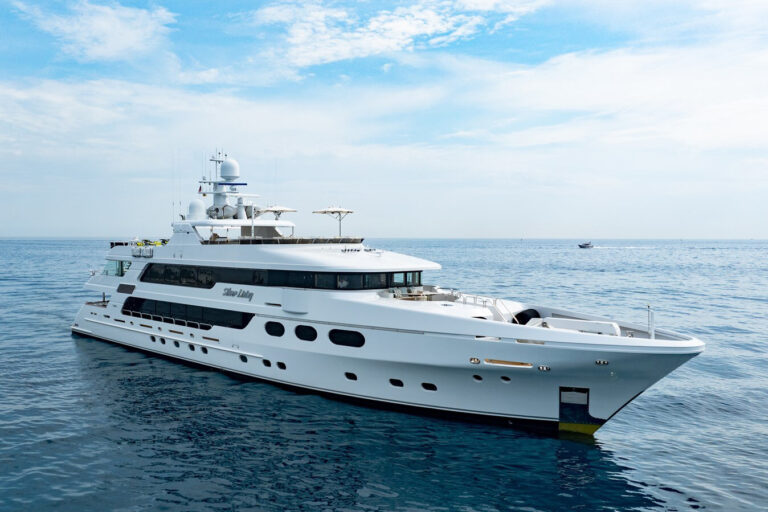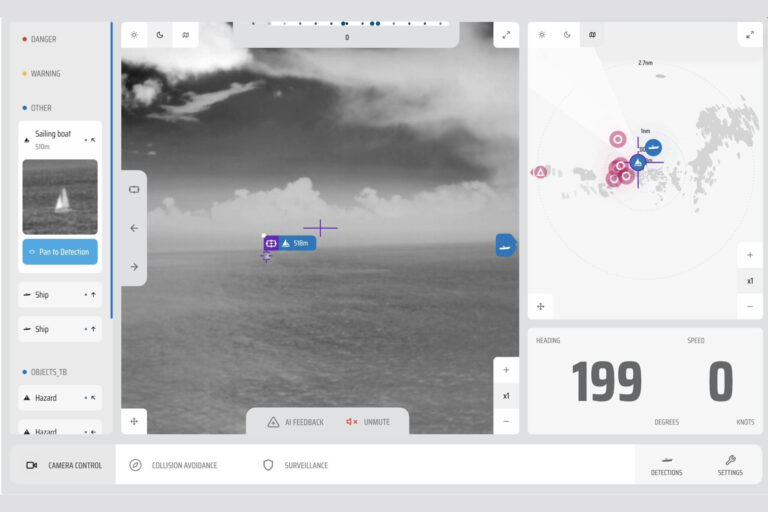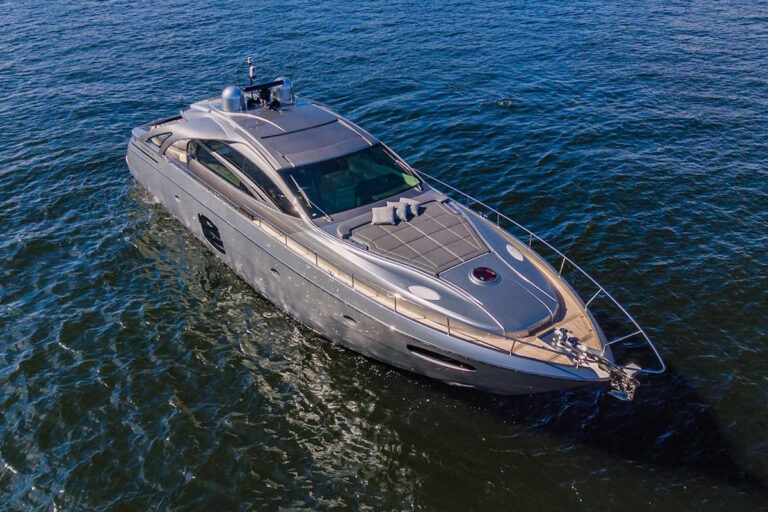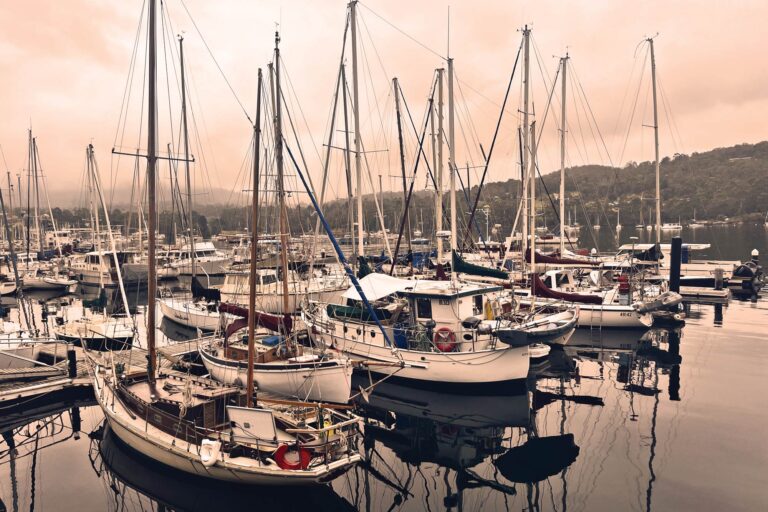Production boatbuilding technology has evolved to the point where most consumers worry more about fluffy features than the way a boat is put together. While the industry standard is a safe bet for most boatbuilders, Jonathan Sadowsky believes the technology that he has pioneered in his new Revenge 35 LT is one of its strongest selling points. He may be right!
Sadowsky’s technical track record makes it difficult to dismiss him as a dreamer-he has already proven the value of his passion for boats and engineering. Having owned and fished a number of cold-molded wood tournament boats in the 1980s, he felt he could do better. He started with the basic shape that was popular at the time and brought in the late Jim Wynne as a consultant. Wynne, a pioneer in high-speed, V-bottom design, suggested that to improve performance, he should avoid warp in the bottom and carry more deadrise aft. Sadowsky, comfortable with computers, used one of the first design programs to craft a set of lines. “When we tank tested the hull, we knew he had a winner, said Sadowsky.
Minimizing weight was critical to the performance of Sadowsky’s hull form. While cold-molded wood construction was proven, he was certain that he could produce a lighter structure with high-performance composites. Working together with composites expert David Jones, they developed a carbon/epoxy construction system suited for boatbuilding. The first boat, the Revenge 58, was launched in 1990 and yielded a top speed of 47 knots. Another 58, a 55 and a 63 followed and according to Sadowsky all remain competitive fish boats today-one having logged more than 12,000 hours.
It was this experience and recent advances in computer and composite technologies that convinced Sadowsky that the time was right to take the next step. “The close tolerances we can now achieve by computer modeling structural components, and building them using CNC machines, has taken the guesswork out of boatbuilding, said Sadowsky as he twirled a 3-D model of the 35’s internal support grid on his twin computer monitors. “The dimensional consistency of epoxy pre-preg parts and the new methacrylate adhesives allow us to build the 35 like you would a Revell model.
Pre-pregs are reinforcements that are precisely impregnated with epoxy resin and frozen until use. Delivered in rolls, they are laid into the mold, vacuum bagged and cured in an oven at 275 degrees Fahrenheit. “The ability to control the reinforcement/resin ratio and the high vacuum achieved is the key to a high-strength laminate, said Sadowsky as he thumped a sample of the 35’s bottom. Composed of plies of a Kevlar/fiberglass blend on each side of one-inch-thick Core-Cell, the hull is laid up cold and baked. Sadowsky suggests that such laminates have 500 percent more strength for a given weight than a conventional hand lay-up. Tolerances are such that the internal support grid is designed with mating flanges and is fusion bonded-essentially glued-to the hull. “If you tried to separate a fusion bonded component from the hull, the laminate would fail before the bond, said Sadowsky. Exterior surfaces are finished in polyester gelcoat that is specially formulated to bond with the epoxy laminate.
The 35’s performance seems to validate Sadowsky’s vision. While jaded dockside pundits might be tempted to tag her as just another high-end center console fishing machine, taking the wheel proves otherwise. Considering that she weighs just 7,800 pounds dry with engines, her substantial feel is somewhat surprising-it is the result of her manufacture, not her mass. When bonded together, her hull, deck and liners become one structural element. She is tight-no shakes, no rattles, no vibration. With a fine entry and 22 degrees of deadrise at her transom, she is well suited for high-speed, offshore work. At speed, deeper sections are traditionally less efficient and consume more horsepower. At rest, they generally produce a more tender response to a beam sea. The 35’s light-weight structure negates the speed penalty and her low center of gravity dampens her motion.
We began our sea trial at the sea buoy off Stuart, Florida, and by the time I recorded her top speed of 42 knots we were in the next county! While this is excellent performance for a large twin outboard center console, she is capable of more with a clean bottom-Sadowsky suggests a top speed of 46 knots can be expected. She is nimble and cuts as tight a turn as you please. Backing, she comes around in little more than a boat length and she idles at a relaxed pace that even live bait will enjoy. The Teleflex electronic controls are silky smooth and have a big boat feel.
I was very impressed with Suzuki’s new 250 hp four strokes-the largest offering from the company to date. These 24-valve, 55-degree, V-6s are compact and whisper quiet at idle. At speed, they have a throaty hum not unlike an inboard. In addition to their technical wizardry, the swept-back cowl design looks terrific on the 35-indeed they seem a perfect match. Given throttle, she reached maximum speed in less than 20 seconds-impressive! The Suzuki engine electronics indicated a fuel burn of 25 gallons-per-hour at 30.7 knots (4,800 rpm). At 22 knots I recorded a fuel burn of just 16 gallons-per-hour. Given this performance and her 400-gallon fuel capacity, the 35 has impressive endurance. She would be an excellent choice for chasing fish in the Bahamas.
Sadowsky is as passionate about fishing as he is about boat design and he has successfully transmitted his experience with rod and reel to the 35. Her center console layout is ideal for light tackle offshore angling. Her self-bailing cockpit has two in-sole storage boxes and a live well on centerline. There are pitch wells in the transom corners as well as built-in tube style bait aerators sized for a small bonito or mackerel. The 35 has a traditional internal motor splash well, which I prefer as the engines are less likely to snag a line or nick the corner of a dock. There is lockable rod storage, a cooler and a coffin-size catch box forward. The foredeck is wide enough to stand on, and a toe rail offers a footing reference for those tossing a fly. The stylish helm is outfitted with Suzuki instrumentation and has space for several large electronic displays. The carbon fiber/fiberglass hardtop has a molded-in electronics box and an internal storage compartment for life jackets.
While there is a standard specification, the 35 is more or less a custom boat, and Sadowsky’s small team of craftsmen in St. Petersburg, Florida, seem willing to please. With a built-to-order price tag of around $275,000, the 35 is not for everybody. However, dominating the market has never been Sadowsky’s attraction to boat building. “I have never seen the point of building a boat the same way everyone else does, said Sadowsky. While I’m certain he would be thrilled to build a fleet of 35s, I also sense that having proven his process, he is ready to move on. Think of the possibilities-Sadowsky has a 55-foot tournament boat on the way.
Contact: Jonathan Sadowsky, (772) 781-6301; www.revengeyachts.com.

